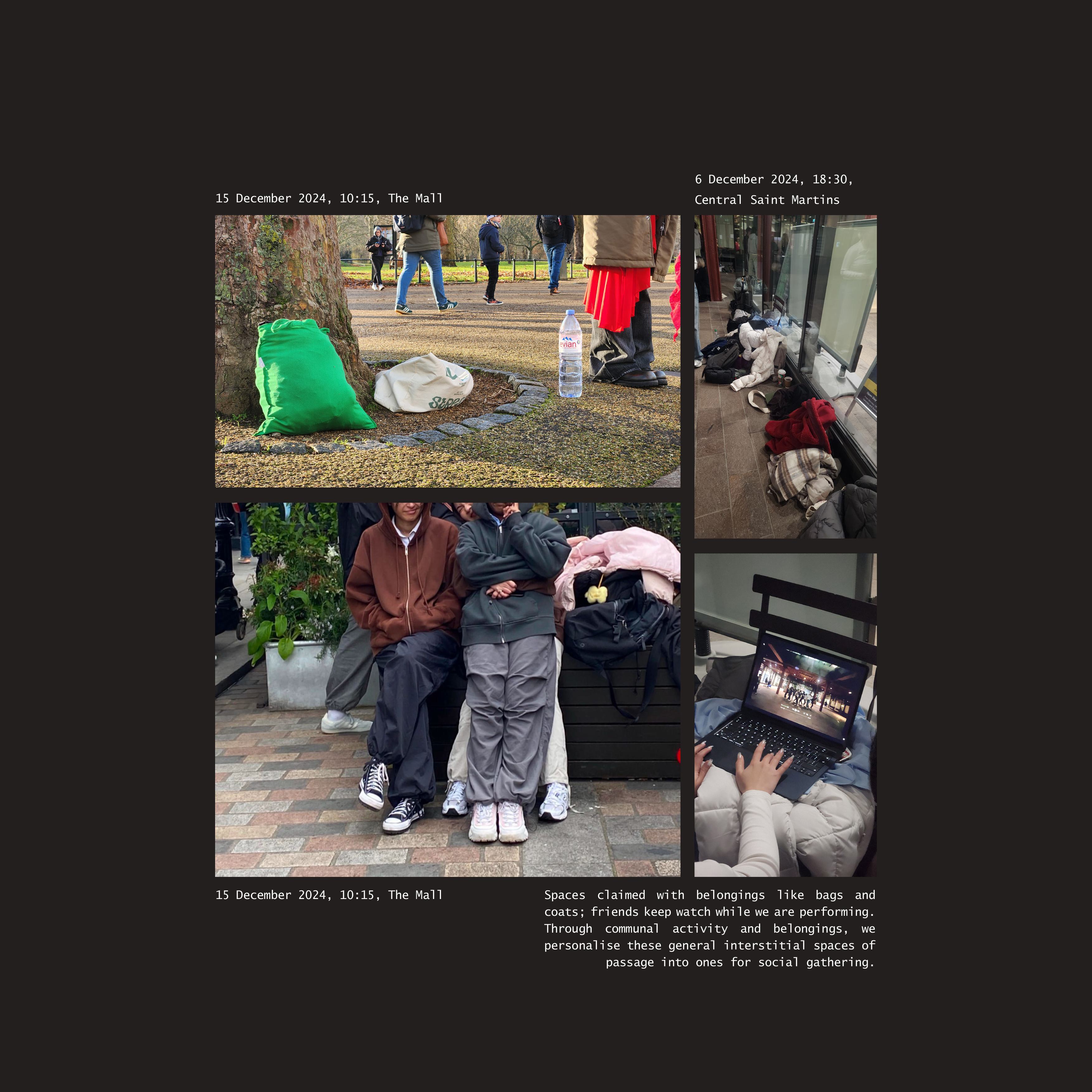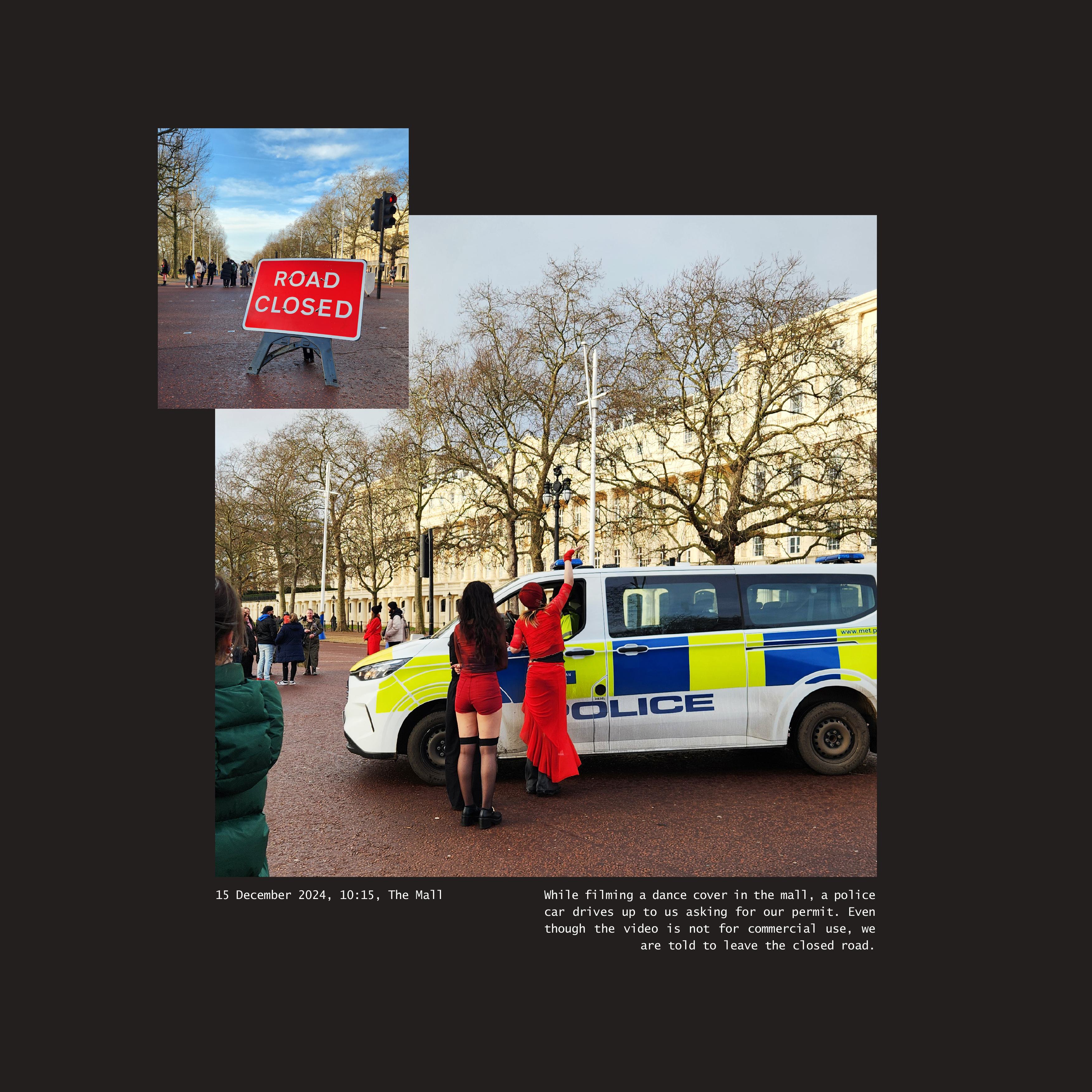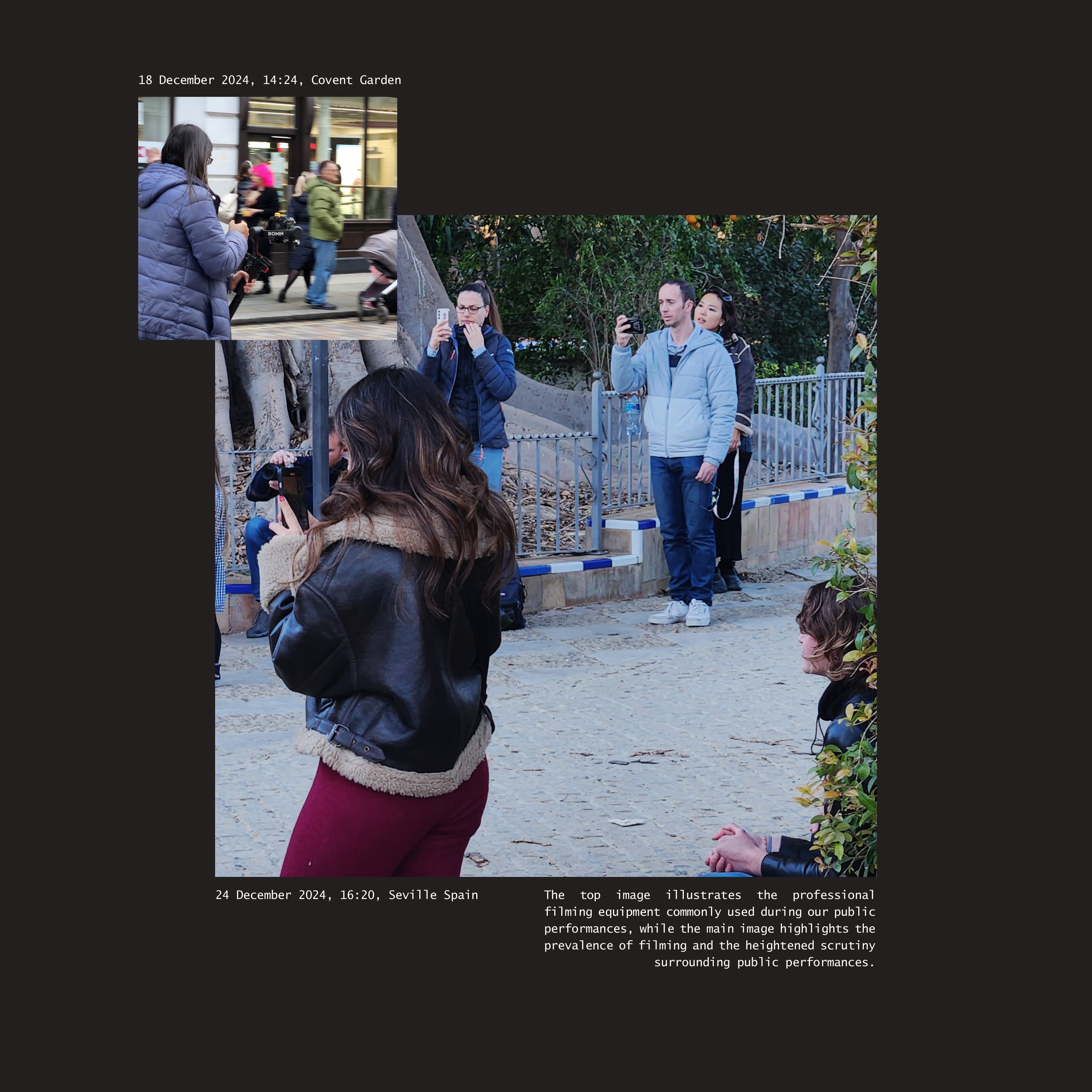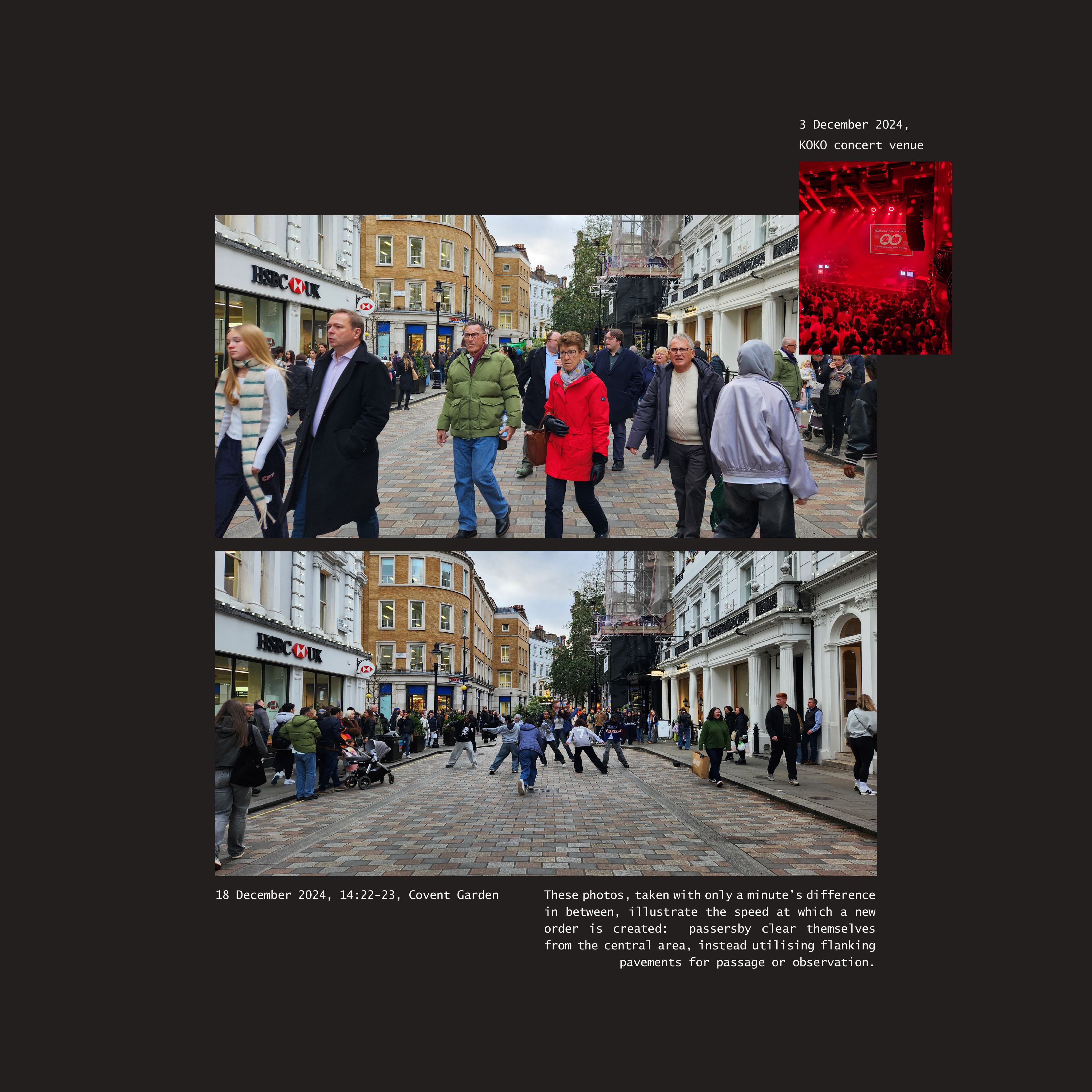Based on an autobiographical reflection on my personal experience performing choreography in Central London's public spaces, this essay investigates how performance-based practices, specifically art-based forms conducted with intent and choreography, recontextualise the city and encourage the assertion of personal autonomy and expression in public space. The themes and concepts in this work originate from personal experience before being analysed through spatial politics and theory. Photography (personal and sourced) and its arrangement are used for illustration, supplementation, and engagement with wider literature.
The public sphere is a web of intersecting publics—online, offline, and hybrid—within which public space as the front stage of social life enables rich, unpredictable interactions and serves as a potent site for artistic and political expression (Bruns, 2023; Spencer, 2020). As nodes of diverse practices, urban environments are fertile ground for such meaningful encounters. To claim one's right to the city means to activate public space for spontaneous, socially meaningful use (Lefebvre, 1996). Performing artists, unlike other actors in public, engage space with deliberate awareness of audience perception (Davies, 2011), transforming public infrastructure into platforms for creative resistance, community interaction, and the reimagining of urban identity (Borden, 2019). What begins as recreational practice reveals itself as a political act—performances challenge public infrastructure and the schemes of public control they execute by illuminating and challenging their insidious encroachment while providing moments where the people gather in numbers, action, and power to make an intentional stand on public ground. Together, performers and audiences disrupt urban hierarchies, using space spontaneously and democratically to create new spatial relationships defined by the people and not the state. These acts decentralise meaning-making, foster public dialogue, and resist the city as a site of obedience, instead advocating for agency and transparency. |



